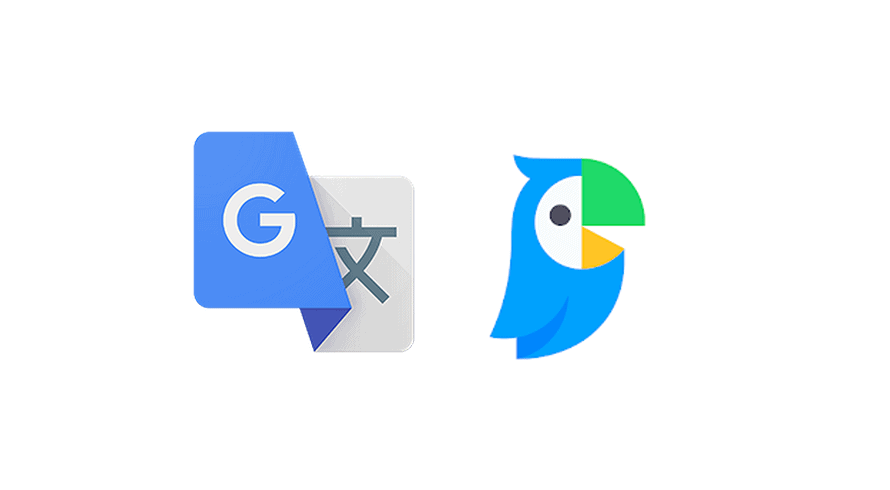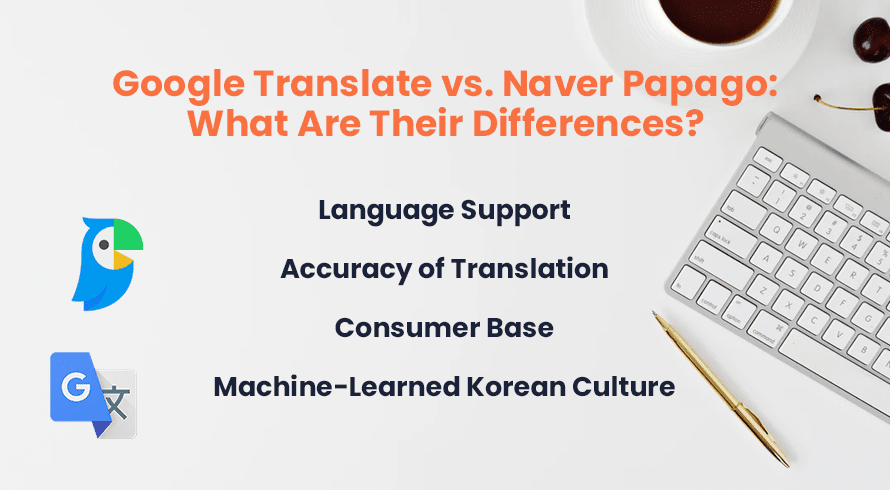Inquivix HQ
1-903, 18 Eonju-ro 146-gil,
Gangnam-gu, Seoul, Korea
06057

Google Translate vs Naver Papago- Communication is vital for success in all your relationships, and translating what you speak or write into a language the receiver understands is a significant effort that can do wonders! There are over 7,100 languages being spoken in the world right now. Although you don’t need to know them fluently, there are many instances where a tool to translate information will come in handy, if not necessary, for people across various industries and countries. This blog compares two powerful translation tools, which are Google Translate and Naver Papago, especially for Korean and Japanese users.
What Is Google Translate and Naver Papago?
There are very few translation solutions available in the industry for people in Korea, Japan, China, and other Asian countries other than Google Translate. However, Naver Papago is one translation tool that is putting up the fierce competition with Google Translate.

Google Translate
Google Translate is a free tool developed by Google that enables you to translate sentences, documents, handwriting, speech, and even websites from one language to another in just a few seconds. Google Translate offers translations in 115 languages as of May 2022 and translates a staggering minimum of at least 100 billion words every day. You can translate text, handwriting, photos, and speech all on the Google Translate app and the web version.
Naver Papago
Papago is a web translation tool developed by Naver Corp, one of South Korea’s largest Internet companies, popular for its developments in artificial intelligence. Papago is mainly used in its home country, Korea, and further extends to a few Asian countries like Japan, China, and more. Papago is free to use and can translate text and speech from one language to another.
Initially launched as a smartphone application, Papago now has a website too. However, there are limitations to just how many languages it can translate and the types of texts it can translate too.
Google Translate vs. Naver Papago: What Are Their Differences?
Google Translate has been around for over a decade, with almost little to no competition that is capable of replacing it. However, Naver’s Papago, a predominantly Korean translation tool launched in 2017 and is proving to show significant competition, especially in the Korean market. Read on to find out the differences between the two translation tools.
Language Support
Google supports the reciprocal translation of 115 languages, while Papago can only offer translation between 15 languages. 2, of which are the simplified and traditional Chinese languages.
Accuracy of Translation
Papago shines brighter than Google Translate here, mainly because it focuses on a comparatively lower number of languages. Although not error-free, and sometimes completely irrelevant too, Papago’s biggest advantage is its Korean roots. This helps the Korean translations to be much more accurate than Google’s.
However, both tools lack “perfect” accuracy in their translations, most often being unable to translate idioms and any text that is written using literary devices like metaphors and more. The length of the translation also has an impact on how accurately the tools translate the given information.

Long-Form Translation
Even in its home in Korea, Papago is mainly used for everyday conversation and short words, while Google still has an upper hand for its quality of web-based translation for academic articles with lengthy sentences. A statistics report in 2019 showed that Google Translate recorded 2.4 million monthly active users, while Papago had 1.6 million for the translation of longer content.
Consumer Base
Google Translate has users everywhere around the world. Anyone regularly using Google, has probably used Google Translate at some time. Papago’s consumer base is predominantly Korean, with more and more users shifting from Google Translate to Papago. Papago’s other main languages include Japanese, Chinese, and Vietnamese, and consumers in the countries are gradually using Papago to translate their texts into Korean. However, for translation to English and other languages, most users are still comfortable with using Google.
Pronunciation
This is a work in progress for both tools. They require accurate pronunciation from users using the speech option for translations while their translated responses are not so perfect. While Google’s English pronunciation is impeccable, and so is Papago’s Korean, the other languages fall in varying degrees.
Machine-Learned Korean Culture
The Korean language is mainly spoken in two ways, with honorifics to show respect to older people and other respectable people in the community, and the informal way, which are conversations with those younger, or between friends or people of the same age. This is a huge part of Korean culture, and the option to toggle the “honorific” translation on and off makes Naver’s translations very accurate. The tool only allows you to hand-write Korean words, unlike Google which allows handwriting for most of its language.
Can Google Translate and Naver’s Papago Replace Human Translators?
Both translation tools are effective up to a certain extent but are far from error-free. This leaves a human having to constantly proofread the translations. Instead, human translators are much more reliable and capable of clearly understanding the gist of the text to be translated. This helps them produce a much more cohesive and clear translation. While we are not saying that Google Translate and Papago are not helpful tools, they have still not come far enough to replace the skills of a human translator.

